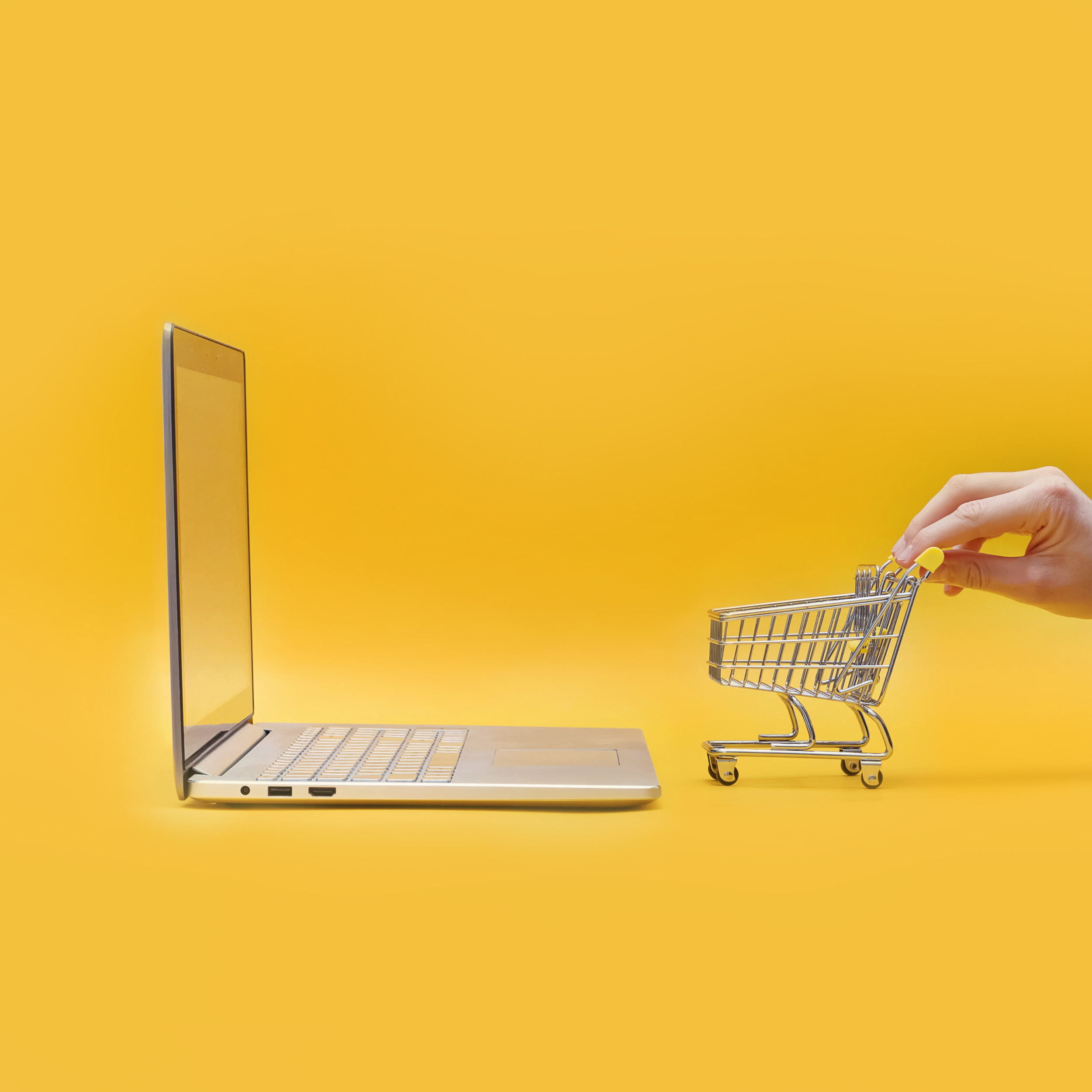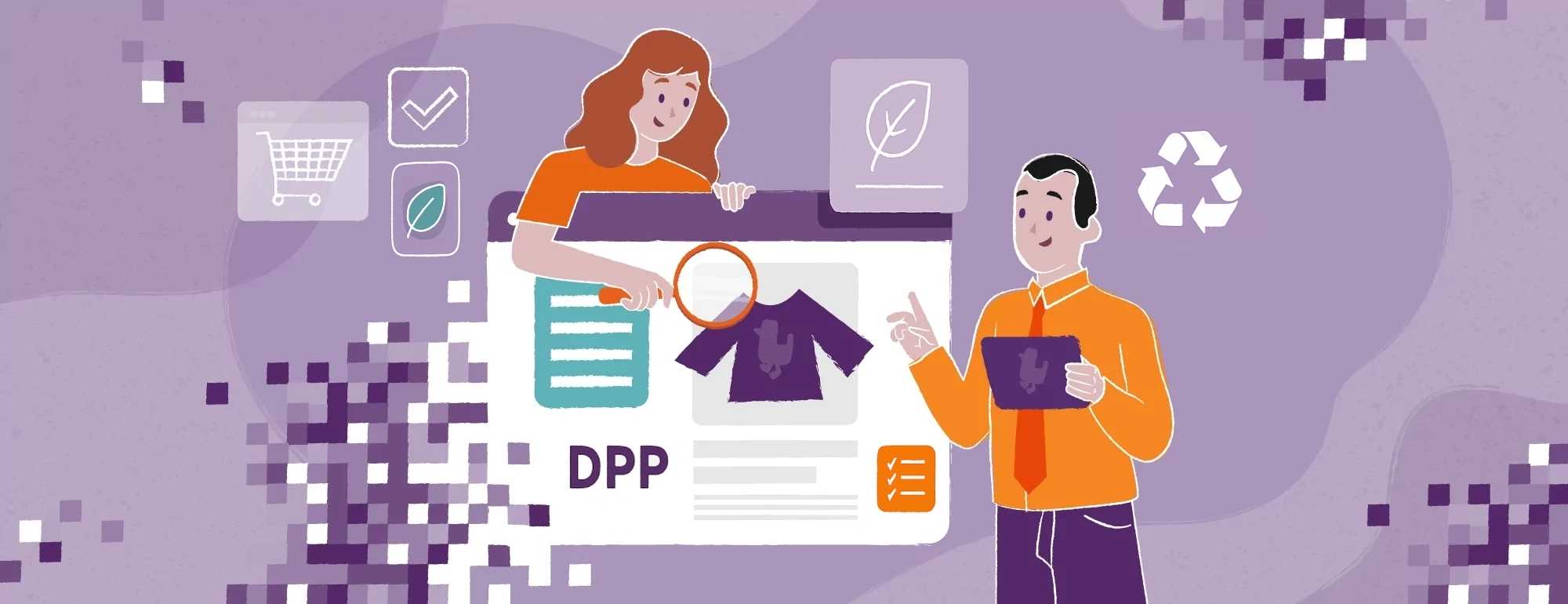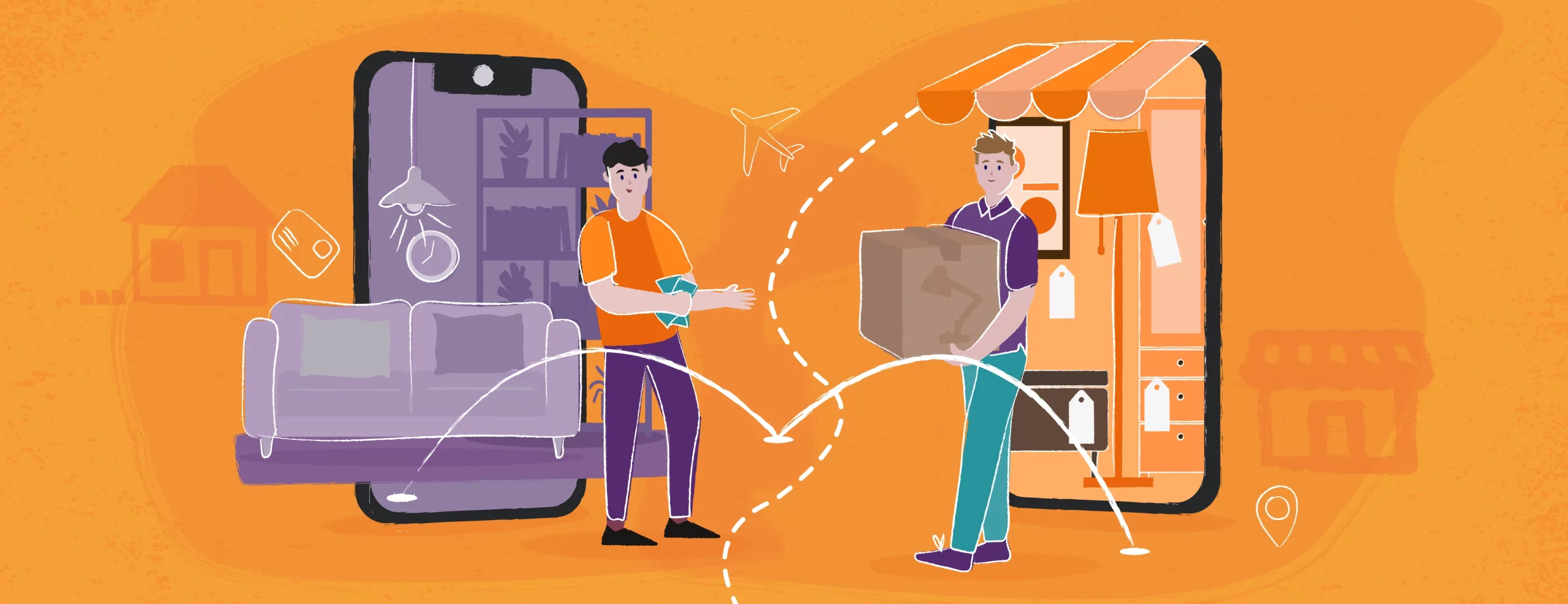Post COVID‑19 & The Future of E‑commerce
E-commerce is changing: that’s a no-brainer. It always has been. What’s important however, is the rate and scale at which it’s currently shifting. The recent epidemic has thrown the online channel into overdrive and presented companies with a clear choice: adapt or fail.
Needless to say – the vast majority chose the former. Now they need to determine a cost-effective approach that’s still fast, effective and customer-friendly.
Following on our most recent video (featuring yours truly and shared below), I wanted to explore this topic in more detail. The evolution of e-commerce is happening at a greater pace than ever before; now is the time to be aware of these changing trends and how your business can adapt in such turbulent times.
Here, I want to discuss:
- How COVID-19 has not only changed but accelerate the immediate future of e-commerce and its respective market.
- New consumer behavior and trends – and how companies are adapting to them.
- The increasing competitive nature of the e-commerce market.
- How businesses can adapt and move with this e-commerce evolution.
E-commerce Evolution in the Wake of COVID-19
Early estimates indicated that the global e-commerce sector would grow by 256%. While that’s a substantial development, businesses didn’t originally account for the overall percentage of their business that this would represent. At the time, estimates suggested e-commerce would “only” account for 17.5% of all retail sales – that its traditional evolution would move alongside traditional sales channels – but COVID-19 and the subsequent lockdown drastically changed this.
Now, e-commerce has become a central, primary channel for many businesses. What’s more, there’s a lot of evidence that, while these current figures won’t last forever, the overall shift to e-commerce means these figures will stay higher than last year’s expected projections.
This is the new normal: e-commerce is a vital part of business and will continue to be so, even when shops reopen in full. Consumer habits have forever been changed and e-commerce will continue to be a premier channel for many needs and wants. Users now know to look online first and – what’s more – they’ve had plenty of experience and practice in doing so.
Growth by Sector
Companies have not been universally impacted by the pandemic. Alongside those that already have e-commerce operations established (versus those that haven’t), we can also put each industry or sector into a broad grouping.
First of all, we have those markets that are continuing a traditionally strong e-commerce presence – often because the nature of the goods and services lends itself well to the channel. The electronics market demonstrates this clearly, as does our client, RTV EURO AGD, whom have always had a popular e-commerce channel, serving them well in this crucial time.
In the middle, we have companies that are seeing a significant increase in e-commerce revenue, but arguably not enough to mitigate the losses from retail stores. Fashion, for example, has historically tied into physical outlets, because people need to ‘feel’ and examine products (which we’ll discuss in its own point later). The lack of this ability, combined with the lockdown, resulted in a sharp decrease in demand for new products. Here, e-commerce is serving to ensure acceptable losses. Another one of our clients, LPP, are expecting around PLN 2 billion from e-commerce in Poland this year (approximately 500 million USD / 450 million EUR / 400 million GBP), compared to PLN 1.7 billion last year (430 million USD / 380 million EUR / 350 million GBP).
Thirdly, there have been a few sectors that have unfortunately shrunk. Anything related to travel, for instance, has seen declining sales. Overall orders for luggage & bags have dropped by 5%, but this could continue to worsen depending on local travel conditions/restrictions.
Changes in Consumer Behavior
E-commerce, like retail, is a sector dictated by consumers and their preferences. With COVID-19, the evolution of e-commerce was thrust into the limelight as other methods became unavailable. However, even then, we’re able to see some clear preferences and trends that can’t be ignored.
With other options not available – or simply not safe or convenient – we’ve seen many demographics move to e-commerce channels.
What’s more, this isn’t likely to be a temporary shift, either. Surveys indicate that roughly half of most demographics intend to continue using e-commerce businesses that they’ve found during the lockdown.
(and in some countries, such as Poland, this can be even higher, at around 63%)
Numerous reports are showing elderly people – a segment that previously favored physical outlets highly – are staying at home for their safety and embracing e-commerce, and often for the first time.
Here are a few examples:
- In Denmark, Deloitte are expecting 1 million senior citizens (65+) to engage with online shopping on an increasingly frequent basis.
- In the US, a survey from Coresight Research showed that those over 61 years of age were the most likely to avoid both shopping centers (85.6%) and shops in general (61.1%) – the highest of any age group.
- And in China, over 60s as a whole are taking to online shopping, apps and other digital experiences in large numbers.
In other words, this trend is global. No corner of the e-commerce world should ignore it.
It’s worth noting, as well, that these customers are new to the experience and you should subsequently focus on mastering the ‘basics’ – clear navigation, easy search functionality and a clear and well labelled customer shopping path. While we can talk about new technologies and trends, these ‘late adopters’ of e-commerce will still be using their computers and smartphones as primary channels.
The Need to ‘Feel’ Products Online
One of the biggest shifts in e-commerce has been the need to examine products as reliably as possible. For demographics like the elderly, who previously inspected physical goods, this is presenting one of the biggest challenges. It’s also an area where you can push ahead – or fall behind – the competition.
There are many essential factors that shoppers look – often specific to that type of product. For example:
- 360-degree views are vital for the likes of fashion, where people need to inspect goods from most (if not all) angles.
- For others, videos and images may be enough, so long as they demonstrate clear information. When buying a smart TV, most people are concerned about the dimensions rather than how it looks from the back.
- For items with custom features, such as different colors, it will help to show all colors. Otherwise, shoppers can’t see the exact product they’re considering and may end up unconvinced.
On top of this, customers also expect reliable and updated information. They want to know that they are looking at the most up-to-date data whenever possible.
In the future, we will see VR, AR, voice and other technologies become increasingly common, but for now the focus should very much be on accurate information and clear images – everything shoppers need to understand products as much as possible.
Mobile & Desktop Platforms
When it comes to shopping and the current digital era, there’s one mantra that is repeated more and more: mobile matters. It’s a growing segment – but when people are staying at home more often, it’s not leapfrogged over its predecessors.
In short: mobile browsing on e-commerce stores is continually on the rise, but it’s still desktops that drive the most conversions – just ask Shopify.
However, one area where mobile will become more impactful is BOPIS: Buy Online, Pickup In-Store. In the US, for example BOPIS orders in April this year were 6-fold from those last year. It’s also an area where industries that don’t normally embrace e-commerce have started to become active players. Food orders naturally shot up in demand, but not every market can pivot to deliveries.
For instance, we helped Green Gorilla in Switzerland with such a situation; by hosting app for BOPIS orders, they were able to keep their business as safe as possible, even when deliveries weren’t an option.
As for the larger stores, existing online giants don’t always win either. Thanks to BOPIS, Target managed to compete with Amazon in the US – and even take over in terms of website traffic.
Increased Competition
With more companies moving online, the competition is now much more intense. For many, going online means entering a market that’s much bigger than your local rivals. People may be willing to visit locations within a certain distance of their home (or even choosing businesses purely on that factor alone) but, when travelling is out of the question, more potential businesses are now in their scope.
The need to stand out is greater than ever. With e-commerce becoming the new norm, your online presence needs to match your in-store quality. Additionally, loyalty programs and other initiatives will become more frequent in a bid to ensure repeat visits. Given that so many people intend to stick with e-commerce, now’s the time to be building that loyal following.
New Technologies for the Oldest Problems
None of the problems we’ve described so far are exactly new. More so, the COVID-19 pandemic and the closing of physical shops have only heightened them. Customers want to better engage with products, understand what they’re buying and gain a personal experience that ensures they walk away with the best products (and, of course, best value).
E-commerce Platforms
Those companies that don’t have a dedicated e-commerce platform will now need to rapidly establish one. There are a number of options here. A typical B2C model can work on a commerce platform, such as Magento or Shopify, while B2B and more dedicated consumer models might want a web portal or customized platform – such as the ONe B2B platform – that better connects the unique services and solutions on offer. Remember, it’s all about establishing the same level of quality online that would be expected offline.
Likewise, a mobile presence will certainly prove useful, especially for companies looking to reintegrate their retail shops as safely as possible – such as with the BOPIS approach. To ensure a convenient and smooth service between platforms, modern technology like Progressive Web Apps can help ensure success.
And for those companies that are already online? Now’s the time to optimize and refine. The market is about to get a lot more crowded.
What About Those Not Moving Online?
For companies that are simply choosing not to develop online channels at all, we only need to look at Primark in the UK; the fashion retailer is not opening any e-commerce functionality, which has led to some strong criticism.
While the business itself states online channels would impact their low-price model (arguably Primark’s unique factor within its market), a zero-earnings month is something even the biggest companies can barely survive. Unless your business has an already established following like Primark’s – as seen by their reopening queues – we can’t recommend this option.
Product Information
Information is important for making any purchase. In the current climate, along with the increased competition, customers are moving from impulse shopping to making informed decisions. In other words, those that have the most information available will have a competitive edge.
Product Information Management (PIM), such as Pimcore and Akeneo, really helps out here – connecting all your various data sources together will ensure information isn’t dropped by the side because someone forgot to manually update a listing.
Online shoppers will also need to “feel” products more than ever before. Without being able to visit a physical shop or inspect a product themselves, they need technology to help bridge this gap and overcome what is arguably e-commerce’s biggest weakness.
In particular, online stores need to:
- Take care to ensure accurate product information, including multimedia support, attractive images and complete descriptions.
- Automate and personalize where possible, to enhance the experience.
- Embrace online customer support as much as possible.
- Enable customization by the various respective parameters, such as weight, size and quantity, updating all relevant information to match.
It’s also entirely likely that e-commerce will be used as main location for browsing products – customers unwilling to enter shops unnecessarily will look to the online stores to find what they need, even if they intend to purchase in-store. RTV EURO AGD, for example, don’t just list all the product information users need, they also ensure users know which shops have it in stock. Such features will become more useful than ever now.
Automation
Applied in the right places, automation does more than just enable repetitive manual tasks. In fact, it can help drive additional revenue, enable your online store to operate 24/7 and create a personalized experience.
We already mentioned that the evolution of e-commerce is making it the default ‘window-shopping’ experience. Users aren’t going to look through your entire range, so recommendation engines will be one such way to increase revenue by understanding customer needs on a more individualistic level. It’s already worked for the likes of Netflix and Amazon, so it can be expected to roll out across the wider market.
Performance
When the shops first closed, many were saying everyday felt like Black Friday. In the US, every day in April saw more shopping activity than 2019’s Black Friday, with overall online sales transactions up by 22%.
Of course, a lot of this is down to demand at the start of the lockdown. Yet, in specific sectors, such as the clothing sector, online sales increased as prices became lower to meet competition.
In cases where companies were not prepared, some websites were overloaded and stores couldn’t keep up with demand. This drop in performance meant people either couldn’t use the service or, perhaps worse, the service was bad enough to turn them away.
For those that have yet to get online (we’re looking at you, Primark!), speed is important – but not at the great cost of quality. Thankfully, the established nature of e-commerce means that there are tried and tested solutions designed to get you on your feet quickly. Both Shopify and Magento offer pre-built platforms that, with a little customization, can create a strong foundation for any e-commerce.
This, combined with a scalable server approach (such as microservices, right-sizing and serverless architecture in the cloud – or even just using Shopify’s built-in hosting) can ensure performance that copes with wild peaks and drops.
The Future of E-commerce Lies in Convenience
Ultimately, convenience is the winning factor for e-commerce. Everything we do on the customer-facing side is designed to be convenient. With shops down, or otherwise not as trusted, e-commerce needs to be as convenient as possible.
- Is your store fast and performant? That’s convenient.
- Can customers move from different channels easily to match their lifestyle? That’s convenient.
- And can they find your products? That’s convenient.
- Can they find all the information they need for an informed purchase? Convenience!
- If they need to, can they engage with your company in a way that’s… you guessed it, convenient for them?
- Can they order, sit back and let your automated processes take care of the rest? That’s the sort of convenience that leads to repeat visits!
For entrepreneurs that find themselves in this new standard and want to get back on the path of healthy growth, it’s no longer a question of investing in e-commerce or not, but how to do it quickly and cost-effectively.
This is where we can help!
I invite you to contact us – or me – directly, and we will help you take advantage of the current opportunities.







